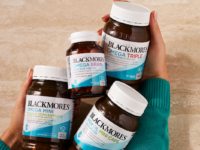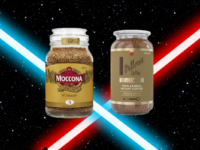 FMCG manufacturers are constantly under pressure to be innovative with product, packaging or pricing to stay relevant in Australia’s rapidly shifting, highly competitive retail environment.
FMCG manufacturers are constantly under pressure to be innovative with product, packaging or pricing to stay relevant in Australia’s rapidly shifting, highly competitive retail environment.
Of course, committing to innovation carries a great deal of risk as usually substantial investment is required from a human, manufacturing and capital resource perspective.
While category data such as Aztec, Homescan or Quantium can provide background information about category dynamics, it does not provide a means to answer “what if” questions, particularly regarding category innovation. Where category data runs out, market research can make the difference.
However, the language of market research is not always easy. Here are four tips to keep in mind when commissioning your next research project, as they will help make you a more savvy buyer and result in better outcomes for your investment.
#1. Target the right shoppers
Most of the marketing professionals we work with at Harvest Insights have at least a solid hunch about who will be attracted to a new product or pack. What is crucial when thinking about market research, however, is that the market is bigger than your target.
When briefing for research to estimate performance of a new product in the market, be sure to think about all potential buyers. Brief your agency to cast the net accordingly.
Research the “addressable market” for your product – that is, everyone who has purchased in your category lately. For most products, that means within the past three months, but be careful about products with a longer purchase interval.
#2. Create realism in your research
At a basic level, it is easy in an online survey, or even in a store interview, to ask a shopper if they would buy product X at price Y.
Often, however, asking this directly generates fantastical levels of purchase intent. It is not surprising really, as most shoppers like to try something new.
At this point, the savvy marketer can either sit back and hit the “product launch” button or they can think more about context.
A simple approach like this does not take into account the actual situation of a shopper they are buying. For example, which other brands are available, are other brands on promotion that week, what do these customers usually buy, and how much do they like their usual brand? In other words, for a customer to buy your exciting innovation, what do they have to trade off?
This context can be integrated into market research studies in several ways, but advances in online programming have brought about one of the most fundamental changes in the past decade. Online surveys can now look beautiful and engaging, and have the brains behind the scenes to match.
It is now possible to create photorealistic planograms, for example, that reflect the reality of your category’s fixture. Participants can zoom in on the product to view on-pack claims, examine pack and unit price, and review promotional tags such as special prices and EDLP/EDV call-outs to reflect different types of supermarket discounting.
Data from an online planogram task goes a great way toward solving the issue of realism, because exposure to new products is conducted within the context of alternatives available to a shopper already.
#3. Take it back to reality
Even when the right research is conducted with the right shoppers, it is best not to just take their choices at face value. Combining “big data” with “little data” often yields insights that neither alone could provide. Supplying your agency with market share data, such as MAT, means the results of a study can be expressed in terms of a change in value, units or volume for any given SKU or brand, at any price tested.
In turn, the research agency will make sure the choices of those shoppers who buy more product, or buy more often, carry more weight in the analysis.
#4. Future proof the project
If you are going to invest in market research, both in terms of time and cost, it makes sense not to just think about your immediate issues, but to think about the ensuing 12 or 18 months. For example, if you are testing one piece of NPD, why not test two or three that are on your radar for year? A well-designed study means you can see the impact of these extra inclusions on the total category.
When thinking about pricing, consider what might be coming down the line from competitors. Estimate the strategies your competitors might undertake to reclaim share, and build them into your research.
Thinking about the longer term when you are providing input for your agency means you can stretch your research dollar further, and provide a starting point for the next round of innovation.
Darrell Collins and Amy Tildesley are the founders of consumer insights company Harvest Insights. Harvestinsights.com.au.











